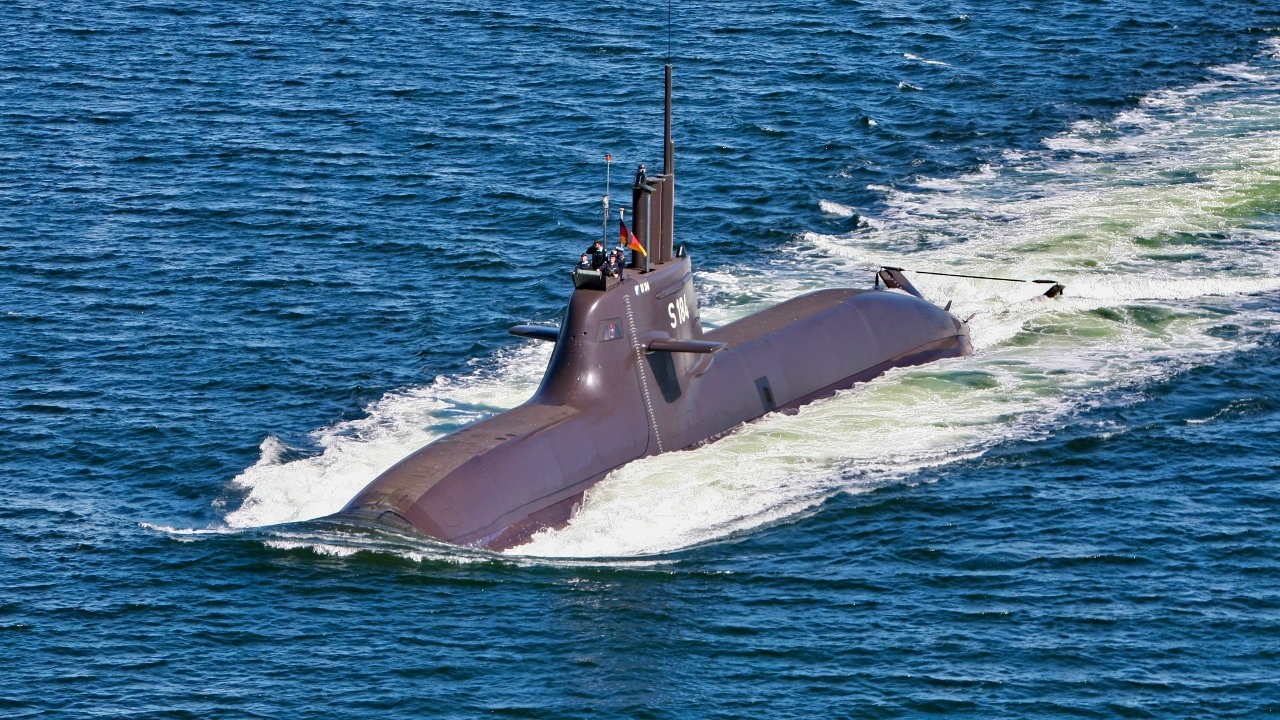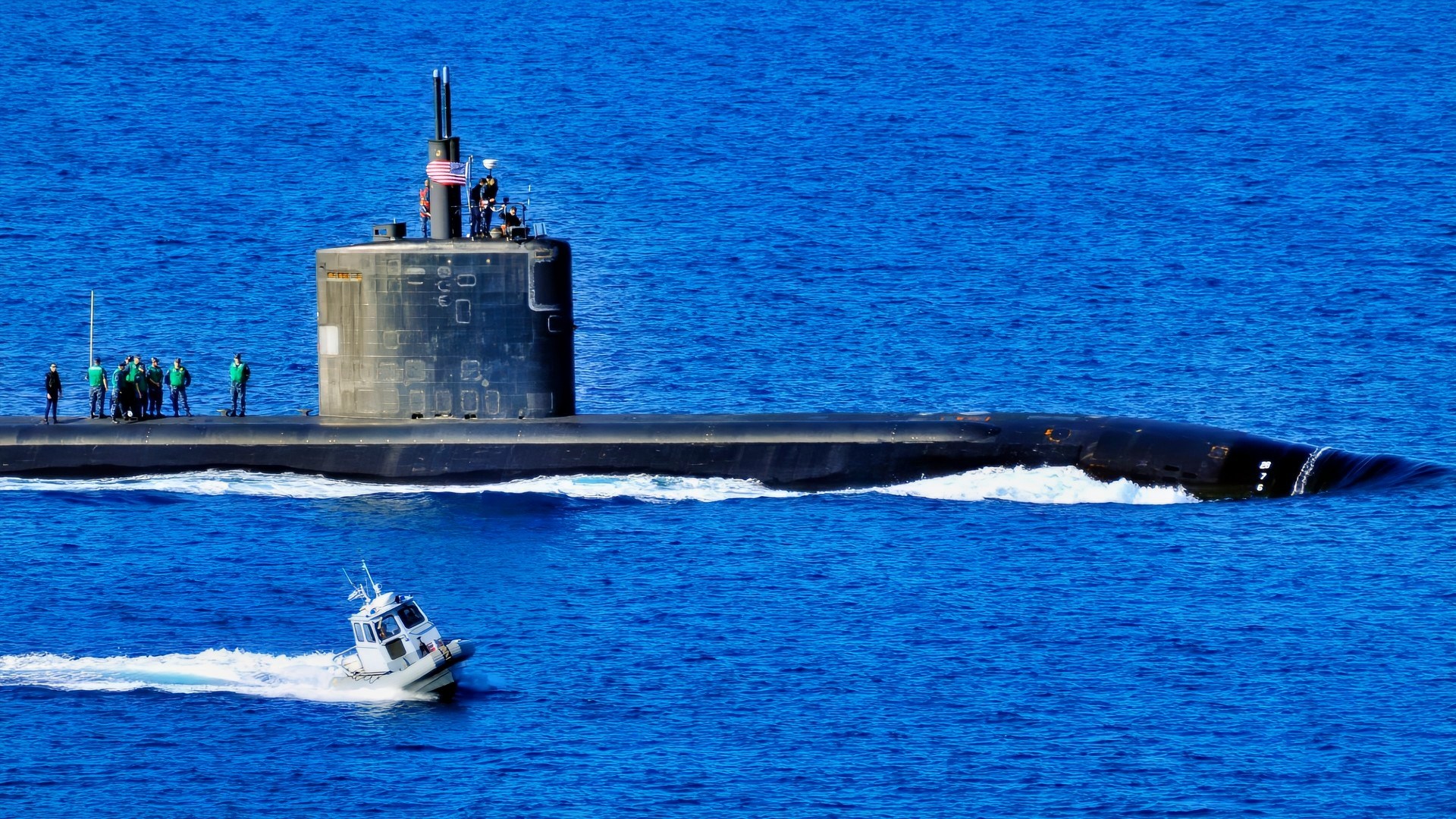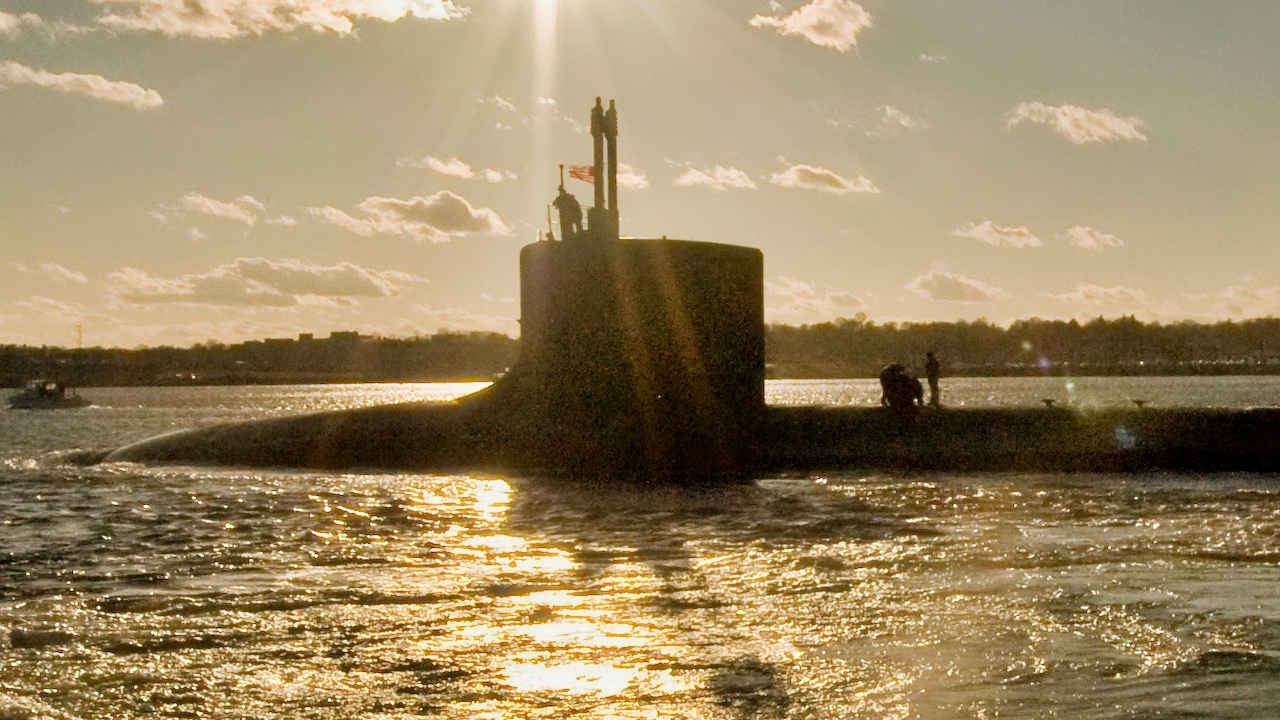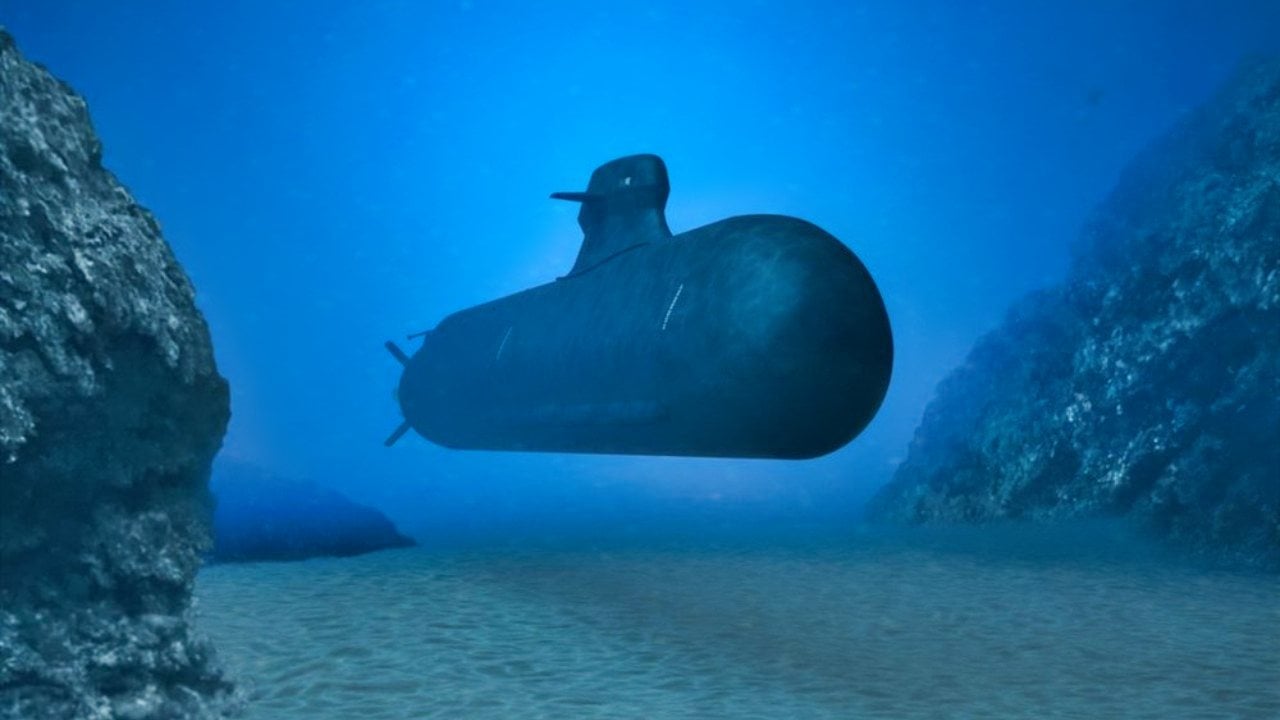Key Points and Summary – The U.S. Navy exclusively operates nuclear-powered submarines because its global power projection doctrine demands the unmatched range, speed, and submerged endurance that only nuclear reactors can provide.
-While Air-Independent Propulsion (AIP) submarines are significantly cheaper, quieter in certain scenarios, and effective for coastal defense (as proven in wargames where they’ve “sunk” U.S. carriers), their inherent limitations in speed and sustained high-power operations make them unsuitable for the Navy’s blue-water, long-duration missions across vast oceans.

Type 212A. Image Credit: Creative Commons.
-Maintaining an all-nuclear fleet also supports the specialized U.S. submarine industrial base.
Why Doesn’t The US Navy Have AIP Submarines?
Lately, AIP (Air-Independent Propulsion) submarines are the rage, with stories of AIP subs “sinking” aircraft carriers in large-scale naval exercises.
And many smaller navies that operate largely around coastal waters are turning to cheaper AIP submarines because the disadvantages of the AIP boats disappear when operating close to shore. The trade-off in range and endurance is more problematic for the US Navy, which operates across the breadth of the Atlantic, Pacific, and Indian Oceans.
USNI pointed out a few years ago that “the big difference between a nuclear-powered submarine and a conventional diesel-electric boat is underwater range and performance. Size, noise, layout, weapons, sensors, and so forth are simply the consequences of the type of propulsion adopted.”
While nuclear reactors on submarines are continuously operating, the diesel boats run on battery power under the surface. They operate in what sailors call “snorkeling” when the sub is close to the surface, allowing the diesel boat to run its diesel engines and recharge its batteries.
And many people want to know why the US Navy doesn’t build AIP submarines. The answer isn’t a simple one, but first, let’s take a look at what AIP subs are.
What Is an AIP Submarine?
AIP (Air-Independent Propulsion) submarines are non-nuclear submarines that can operate underwater for extended periods without needing to surface or use a snorkel to recharge their batteries, unlike traditional diesel-electric submarines. It uses an extra power plant that doesn’t require atmospheric oxygen, significantly enhancing its submerged endurance and stealth capabilities.
AIP boats are advantageous because they can remain submerged for weeks at a time, greatly extending their stealth and operational flexibility compared to conventional diesel-electric submarines.
They are also quieter than nuclear submarines, have lower initial and sustainment costs, and are particularly well-suited for shallow, coastal, or confined waterways.
By reducing the need to snorkel for air to charge batteries, AIP submarines are exposed to detection far less frequently. Some AIP systems, especially fuel cells, are also extremely quiet, making them stealthier than nuclear submarines, which can have detectable noise from pumps for reactor cooling.
Sweden produced the first AIP submarine, the Gotland class, that are very well known and respected.
Will The US Decide To Build AIP Submarines?
The US Navy has not built diesel-electric submarines since the late 1950s, instead investing in an all-nuclear-powered submarine force. Will the recent modern advancements in AIP (air-independent propulsion) technology cause the Navy to reconsider its stance on AIP boats?
Many analysts are proposing that the Navy reconsider its stance by building or purchasing a small number of AIP submarines for coastal or littoral defense. But the counterargument is that the US Navy doesn’t operate a littoral navy and lacks a true mission in this capacity.

A harbor security boat escorts the attack submarine USS Annapolis (SSN 760) as the ship departs Souda Bay, Crete, following a port visit on March 20, 2010. DoD photo by Paul Farley, U.S. Navy. (Released)
The US Navy does not have AIP (Air-Independent Propulsion) submarines because its doctrine focuses on global power projection, which requires the range and endurance of nuclear submarines.
Nuclear power offers unmatched speed, submerged endurance, and a larger carrying capacity—advantages critical for a navy operating across vast oceans—while AIP submarines have limitations in speed and power for extended high-speed operations.
Additionally, maintaining the all-nuclear fleet supports the US submarine industry and technological advantage.
Speed Advantage Of Nukes
Nuclear submarines have a considerable speed advantage over the AIP boats. A US nuclear attack submarine can top out at about 35 miles per hour. The top speed of the fastest AIP submarines is about 23 mph.
However, AIP boats typically travel at 6 mph to gain the maximum endurance. While nuclear boats rarely operate at top speed, either due to trying to maintain their stealth, their cruising speeds are much higher due to having unlimited nuclear power.
Cost? AIP Boats Are Much Cheaper
The cost factor isn’t even close. A typical Virginia-class attack submarine costs US taxpayers about $2.8 billion. And that is without the typical delays and cost overruns that are commonplace with the US shipbuilding industry.
Mid-life refueling of the nuclear reactors for a Los Angeles-class submarine typically costs about $200 million. However, the Virginia-class submarines do not require a midlife refueling, as their nuclear reactors are designed to last for the entire operational life of the boat, which is estimated to be 33 years.

The Virginia-class attack submarine USS Virginia departs for a six-week underway. During this deployment, Virginia will undergo an Operational Reactor Safeguard Examination and a Tactical Readiness Evaluation to assess the submarine’s reactor along with its capacity to combat casualties through damage control.
This is a major advantage over older classes of nuclear submarines that required an expensive and time-consuming refueling and overhaul process.
However, an AIP submarine, which is typically much smaller and has crews costing less than half of nuclear sub costs, costs between $200 million and $600 million, making it substantially cheaper.
With the Navy struggling to maintain combat power in numbers, the submarine force is slated to shrink from 55 to 43 by 2030. The advantage of an AIP submarine like the Japanese Soryu, which has an extended range, could become much more attractive, especially for our forward-deployed Navy elements in the Pacific.
Could the US flip and actually buy a submarine from an ally? It may not seem as far-fetched as one would think. If the US budgeted the cost of a Virginia-class submarine into the Japanese shipbuilding industry, they could get five Soryus.
About the Author: Steve Balestrieri
Steve Balestrieri is a National Security Columnist. He served as a US Army Special Forces NCO and Warrant Officer. In addition to writing on defense, he covers the NFL for PatsFans.com and is a member of the Pro Football Writers of America (PFWA). His work was regularly featured in many military publications.
More Military
China’s New Aircraft Carrier Has 1 Big Advantage over the U.S. Navy
The B-21 Raider Stealth Bomber Has a New Problem: The Government Shutdown
The B-1B Lancer Bomber Has a Message for the Air Force
The B-2 Spirit Bomber Has 1 Big Advantage over Russia and China
Nuclear Aircraft Carrier USS Nimitz Will Be Retired Next Year: It Might Be a Big Mistake










